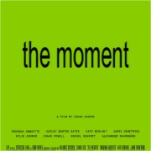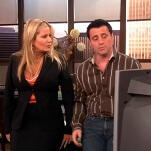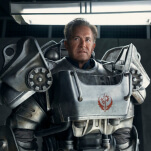Even more than most list-making endeavors, rounding up the best comics of the year is complicated. Does a single 32-page issue of an ongoing series belong on the same list as a 500-page novel? What about books that were published years ago in Japan or Europe but are just now making it Stateside? And where should archival collections go? In the interest of fairness—and operating under the theory that it’s better to be inclusive than exclusive when it comes to praise—this list has been broken up into five categories. The main category is “Original Graphic Novels,” which ranks material published for the first time this year. This differs from “Collected Graphic Novels,” which are stories that have previously appeared in serialized form before being brought together under single cover. “New Issues” nods to serialized comics that will undoubtedly be collected someday. “Reprints” cites books previously published, now out in the States in handsome new editions. And “Archival Collections” rounds up a few of the many, many terrific collections of older comics that are coming out so regularly these days.
8. Rick Geary, The Lives Of Sacco And Vanzetti (NBM)
The title of the latest volume in Rick Geary’s indispensable “Treasury Of XXth Century Murder” series refers not just to the biography of the two immigrant anarchists who were famously convicted of robbing and murdering two men, but to their subsequent elevation to iconic status by leftists around the world. As is his way, Geary takes an objective approach to the case, laying out the evidence for and against Nicola Sacco and Bartolomeo Vanzetti’s guilt, while documenting a post-WWI atmosphere that saw a rise in everyday people joining socialist movements, to the consternation of the existing power structure. Geary’s fascination with the unknowable suits this story of two men whose fates were largely decided behind closed doors, by men intending to prove a point to those people rioting in the streets.
9. Jason Shiga, Empire State (Abrams ComicArts)
Inspired by an actual incident from Jason Shiga’s life, Empire State follows young man named Jimmy as he takes a cross-country bus trip from Oakland to New York to pay a surprise visit to Sara, an old friend he intends to woo, An Affair To Remember-style. The only complication? Sara’s an actual adult, who has put in the time and work to make her dreams come true, while Jimmy’s an inexperienced man-child who hasn’t yet mastered the basics of grown-up life, like how to open a bank account or buy a plane ticket. Shiga wrings a lot of wry comedy and even a little pathos from Jimmy’s cluelessness, as the protagonist comes to realize that even with topics he thought he knew a lot about—like literature, computers, or his own cultural heritage—he’s a babe in the woods.
10. Nate Powell, Any Empire (Top Shelf)
Nate Powell is partial to long, wordless sequences that stretch across multiple pages, with images that are sometimes direct in their meaning, but just as often impressionistic and allusive. Any Empire explores the psychological warzone of a suburban South, where kids are largely left unsupervised, to spend their weekends and after-school afternoons beating each other up, or playing with firecrackers, or tormenting the fauna. Any Empire follows a handful of those kids from childhood to young adulthood, comparing and contrasting the adventures of their youth—which involved killing turtles and staging elaborate battles with toy soldiers—with their contemporary lives, where violence has erupted organically from that culture of macho gamesmanship and cheap plastic guns.
Top Five Collected Graphic Novels
1. Paul Hornschemeier, Life With Mr. Dangerous (Villard)
An intimate character study steeped in metaphor, Paul Hornschemeier’s Life With Mr. Dangerous is about a retail sales associate who spends her off-work hours watching the same surreal TV cartoon series over and over while pining for an absent friend she thinks she might love. In the past, Hornschemeier’s comics have come off as too slight or too heavy-handed, but Life With Mr. Dangerous gets the balance just right, capturing what it’s like to be young and directionless, without romanticizing or overdramatizing. And as always, Hornschemeier’s art is clean and engaging, showing both the lack of clutter in the life of a woman who hasn’t had time to accumulate anything, and the way the simplicity of her favorite cartoon defines the parameters of most of her relationships.
2. Anders Nilsen, Big Questions (D&Q)
In serialized form, Anders Nilsen’s Big Questions was a curious little artifact, featuring page after page of similar-looking birds philosophizing about survival, in between sequences of a grumpy downed pilot and a half-naked, mentally handicapped man wandering through the same sparse landscape. Big Questions reads much differently in book form, where the extended stretches of repetitive, dialogue-light panels feel more deliberate than indulgent. The pleasure Nilsen takes in pure scene-setting is infectious, as he clusters his little animals in and around clearly defined spaces in various configurations. These birds have their own little society, and they are filled with wonder and terror by what they confront as they go about trying to fulfill their purpose. Sometimes they find donut crumbs scattered on the ground, and life is good. Sometimes they find pieces of other birds, blown to smithereens by something beyond avian comprehension.
3. Brian Ralph, Daybreak (D&Q)
Although Daybreak is set in yet another world ravaged by a zombie plague, Brian Ralph takes a slightly different approach to the “ragtag band of humans united against the inevitable” genre, by telling the story strictly from a first-person perspective. The reader is put behind the eyes of one survivor, encountering other survivors in a ravaged wasteland, and not always alert to the mortal dangers lurking just outside the panels. While Daybreak doesn’t do anything that George Romero and countless others haven’t already done satisfactorily, Ralph’s first-person approach is brilliantly cruel, locking us into the point-of-view of someone who says nothing and thinks nothing. We’re left to play judge along with the main character, determining the lines between helpful and unhelpful, hero and villain, living and… something else.
4. Daniel Clowes, Mister Wonderful (Pantheon)
Modified and expanded from a series of strips that ran in The New York Times Magazine a few years ago, Mister Wonderful takes place over the course of one long night as a nebbish divorcé frets his way through a blind date that starts out promising and then takes a few unfortunate turns. Unlike Daniel Clowes’ bleak (albeit hilarious) Wilson, Mister Wonderful is surprisingly sweet, using the basic form of an indie romantic comedy to lead the reader through the thought processes of a level-headed but lonely middle-aged man. It’s like a long-form version of some of the semi-autobiographical stories Clowes used to do in Eightball, where the petty annoyances of modern life—pushy panhandlers, ill-timed cell-phone calls, entitled assholes—push an ordinary guy to rave like a lunatic.
5. Ben Katchor, The Cardboard Valise (Pantheon)
MacArthur and Guggenheim-winning alt-weekly cartoonist Ben Katchor uses simple two-tiered strips to conjure up whole worlds that never existed, in under 10 panels. The Cardboard Valise collects a series of those loosely related strips into a weird travelogue, taking readers on a tour through an island famous for its restroom ruins, a two-dimensional nation that exists on the borderline between other countries, and a metropolis where citizens pine for vacations in these exotic locales. Anyone who reads just a little of Katchor’s nostalgia for the never-was each night before bedtime is bound to have some remarkable dreams.
[pagebreak]
Top Three New Issues
1. Los Bros Hernandez, Love And Rockets: New Stories No. 4 (Fantagraphics)
The fourth of Love And Rockets’ square-bound annual volumes contains the conclusion to “The Love Bunglers,” the masterpiece that Jaime Hernandez began in New Stories Vol. 3. In last year’s L&R, Jaime started recounting the tentative reunion of his recurring characters Maggie and Ray, broken up by a Maggie dream sequence and a lengthy flashback to Maggie’s early teen years. This year, Jaime continues the oft-painful courtship between the now-middle-aged exes, broken up by a Ray dream sequence, another flashback to Maggie’s youth (this time from the perspective of her dead friend Letty rather than her troubled brother Calvin), and a tone-setting one-pager about an old married couple who’ve made it through the doldrums of their relationship. Anyone who’s alive in the world should be moved by this story’s depiction of life as a series of accidents, miscommunications, and embarrassments, which sometimes work out okay regardless. “The Love Bunglers” is rich with hidden meanings, complicated ideas and superior artistry.
2. Kevin Huizenga, Ganges #4 (Fantagraphics)
The fourth issue of Kevin Huizenga’s Ganges continues the artist’s increasingly masterful hybrid of direct storytelling and experimental abstraction, as his hero Glenn Ganges fights insomnia by roaming around the house, reading a dull book, chasing a cat, searching his memory, and weighing his options—both for the moment and in his life. The story suits Huizenga’s style, because he can both document the familiar minutiae of daily life and the sense of unreality that takes hold whenever someone is up half the night. Huizenga works in visual motifs of endlessly branching possibilities and spiraling shapes, showing how becoming “lost in thought” can be terrifying.
3. Adrian Tomine, Optic Nerve #12 (D&Q)
Adrian Tomine is one of the medium’s masters of the short form, and the new Optic Nerve contains one for the canon in “Amber Sweet,” a beautifully brittle story about a young woman who discovers that she resembles a famous porn star. The other pieces in the book—a funny autobiographical two-pager about the creation of this issue, and a strange, semi-experimental piece called “A Brief History Of The Art Form Known As ‘Hortisculpture,’” about a gardener who thinks of himself as an artist—also explore the line between craft and art, and the difference between a whim and a waste. (Tomine also receives extra credit this year for widely releasing his previously limited-edition Scenes From An Impending Marriage, an amusing and true document of wedding-planning.)
Top Three Reprints
1. Daniel Clowes, The Death-Ray (D&Q)
Previously available as an unwieldy oversized magazine, the contents of Eightball #23 are now the graphic novel they always should’ve been, packaging Daniel Clowes’ meltdown of superhero mythology under a sturdy hardcover. Broken into one- or two-page chapters—drawn in a range of styles, from simple cartoons to naturalistic sketches to full-scale, dynamic action layouts—The Death-Ray is narrated by Andy, a tense, middle-aged loner who recalls his high-school years in the late ’70s, when he was a scrawny outsider who acquired superhuman strength and a weapon capable of disintegrating its targets without leaving a trace. With a keenly developed sense of justice and no super-villains to battle, Andy and his proto-slacker sidekick began a covert terror campaign, directed at the jerks in their lives. The Death-Ray can be read as a critique of American foreign policy, or a kiss-off to superheroes, but it’s also another of Clowes’ keen dissections of teen ennui, with the details of a young man’s first cigarette and his first punk-rock album serving as more than just coming-of-age signifiers. In the devastating final two pages, Clowes returns to Andy in the present day and sucks the air out of the piece, as fireworks pop and the hero explains that the petty grudges of young adulthood never fade, but resolve themselves into a system of values, guiding the way the world is run.
2. Ludovic Debeurme, Lucille (Top Shelf)
Originally published in France in 2006, Ludovic Debeurme’s 544-page graphic novel Lucille has the feel of a European art-film, as an anorexic woman named Lucille and a drunkard’s son named Arthur meet and have a feverish romance, gradually undone by their personal problems. Debeurme creates a coherent, compelling narrative here, using a hooky story to draw the reader into two remarkable characters: Arthur, with a chip on his shoulder because of his hardscrabble upbringing in a fishing village, and Lucille, a pretty girl with a sparkling intellect whose warped body-image has derailed her early promise. Debeurme gets underneath what makes these young lovers tick, and is realistic enough to realize that they’re too inexperienced and impulsive to fix each other. Still, the love affair in Lucille burns bright, illuminating two lives.
3. Shigeru Mizuki, Onward Towards Our Noble Deaths (D&Q)
Based on Shigeru Mizuki’s memories of fighting in World War II, the 1973 graphic novel Onward Towards Our Noble Deaths combines detailed, often beautiful illustrations of small Pacific islands with characters rendered far less elaborately, setting up the climactic suicide mission of the book’s title, where men become little more than meat. A character dies roughly every 10 pages in this 368-page book, typically in ways that are more blackly comic than tragic. Soldiers get shot while sneaking off to extract a few drops of water from tree roots, or they choke while trying to carry fish in their mouths. Those are the kind of quirky details that could only come from personal experience, and they’re mixed in with page after page of soldiers dealing with hunger, illness, horniness, and the dehumanizing abuse from their superiors. It’s hard to picture the Imperial Army as the robotic fanatics of legend after reading Onward, with its mass of rounded faces all yearning for an extra spoonful of rice and one last shot at getting laid before they charge into the abyss.
Top Five Archival Collections
1. Carl Barks, Donald Duck: Lost In The Andes (Fantagraphics)
Operating largely independently, former Disney animator Carl Barks stuck Donald Duck and his nephews Huey, Dewey, and Louie into elaborate globe-hopping comic book adventures, usually at the behest of their rich-but-stingy Uncle Scrooge. Taking some of the characters from the Disney shorts and adding his own, Barks fleshed out the community of Duckburg, developing a cast of largely dissatisfied waterfowl who bumped up against each other while trying to find some fleeting happiness. The first volume in a planned series of Barks’ duck comics, Lost In The Andes encourages both fannish and intellectual approaches to the material. There are scholarly analyses and bibliographies, but also more than 200 pages of some of the best-written comics ever published, full of square eggs, rubber bricks, golden Christmas trees, and races around the world.
2. Walt Kelly, Pogo: The Complete Syndicated Comic Strips Volume One (1949-1950) – Through The Wild Blue Wonder (Fantagraphics)
In addition to collecting the first year and a half of Pogo’s syndicated daily run, Fantagraphics’ long-awaited first volume of Walt Kelly’s classic newspaper strip contains Pogo’s first year of Sunday comics, the few 1948 months in which Pogo ran exclusively in The New York Star, and contextual material galore. The early Pogos aren’t as topical as what would come later, when Kelly would become a hero to the counterculture for taking on McCarthyism and promoting ecology. Mostly, these strips establish the world of the Okefenokee Swamp and the animals who dwell there, with Pogo the possum standing as the calm center of a cast that includes the dim Albert Alligator, the not-as-bright-as-he-thinks Howland Owl and the misanthropic, hilariously humorless Porkypine.
3. Bill Mauldin, Willie & Joe: Back Home (Fantagraphics)
When Bill Mauldin returned home after the war, he collected a Pulitzer Prize, wrote a bestselling book, and signed a contract to keep producing a one-panel newspaper comic for the United Feature Syndicate. But while Mauldin’s anti-authoritarian bent was acceptable in wartime, civilians weren’t as interested in reading about the injustices and petty cruelties affecting veterans readjusting to life away from the front. The cartoons in Willie & Joe: Back Home capture Mauldin at a low ebb personally, but ferociously inspired professionally. Over the objections of his editors, Mauldin drew cartoons about estranged wives, limited employment opportunities, heartless fatcats, and an America more petty, materialistic, and xenophobic than the one they’d left behind. Where Mauldin’s wartime cartoons had said “I am one of you” to grunts in the trenches, his post-war work said “What the hell happened to you?” to the people who stayed home. At the time, the public rejected Mauldin’s lectures. Today they’re a blistering reminder that life after WWII wasn’t all suburban bliss and baby boom.
4. Howard Cruse, The Complete Wendel (Universe)
Collecting comic strips Howard Cruse drew for The Advocate between 1983 and 1989, The Complete Wendel is both a from-the-front-lines journal of gay life in the turbulent ’80s, and a still-relevant effort to normalize the outré. Cruse’s Wendel strip was more grounded than some of his earlier work, but because chipper young writer Wendel Trumpstock and his thespian boyfriend Ollie Chalmers weren’t above a little decadence, Wendel could slip easily from everyday domestic and workplace comedy to drug reveries and nightclub orgies. When Wendel began, Cruse gently mocked the in-fighting and rigid idealism of queer activism. Then AIDS ravaged the gay community, and Wendel started to seethe. Still, Wendel was mainly about Wendel and Ollie dealing with the ordinary trials of life that any other committed couple faces, in a depiction of an “alternative lifestyle” as warm, fuzzy and mainstream.
5. Denys Wortman, Denys Wortman’s New York: Portrait Of The City In The 1930s And 1940s (D&Q)
Denys Wortman drew cartoons and illustrations for multiple New York magazines and newspapers between the ’20s and ’50s, but never became as well known as some of his peers, perhaps because his dense panels, sketchy lines and whimsical captions lost some charm when reduced to a quarter-page. The James Sturm and Brandon Elston-edited Denys Wortman’s New York: Portrait Of The City In The 1930s and 1940s arranges hundreds of Wortman originals—saved in a shed by his son—into a tour through the city over the course of a single day. The impressions of city life over a half-century ago are invaluable, but even better, Denys Wortman’s New York features one panel per large-sized page, which does due justice to the artist’s detailed, dynamic drawings of fire escapes, busy lunch counters, jumping dance halls, and dimly lit parlors.







































